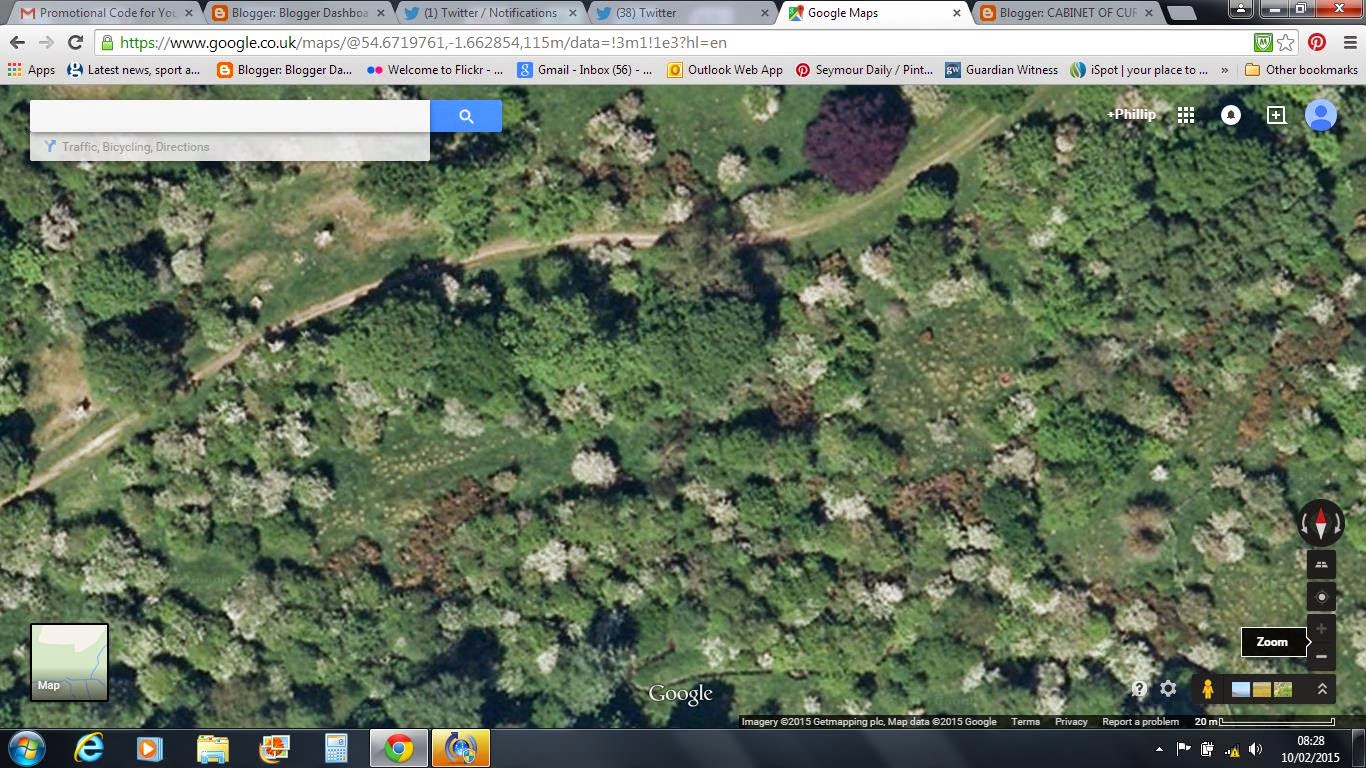At the time of writing they are dormant but at the peak of activity in summer each is home to tens of thousands of ants and - like icebergs - there is more of the colony below ground than above.
There are so many that they are easily visible in satellite imagery. This is a screen grab from Google Earth. Double click on the image to enlarge it, then look for the two groups of pale dots across the centre of the image, just south of the footpath that snakes across the map.
This enormous concentration of ant nests makes it a perfect feeding site for green woodpeckers, which are ant-feeding specialists. I can't think of a single time when we've visited when I haven't seen or heard one (though I've yet to get a decent photograph!).
One curious feature of the ant metropolis is that every nest is capped in winter with a single species of moss - neat feather moss Pseudoscleropodium purum.
When the grasses die down in winter the vibrant green moss has a chance to thrive in its place in the sun, surrounded by dead grass.
There's plenty of moisture for most of the winter months but the moss's enduring success in this habitat, which can at times be very dry in such a sunny, south facing site, may be due to the arrangement of the moss leaves.
The leaves are arranged like a spiral whorl of overlapping cupped hands around the long axis and the 'cups' hold water
You can see the effect here - when the moss is moist it has this very shiny, inflated appearance. Under the microscope you can actually see water trapped under the leaves,































Those things are going to take over the earth, I swear
ReplyDeleteVery interesting, at first I thought they were just clumps of grass, would not be sitting there having a picnic during the summer ! although it would be nice to see the Woodpeckers.
ReplyDeleteAmanda xx
Fascinating...Your photos are great, especially showing the shapes of each leaflet to hold water. Love the symbiosis of ants/woodpeckers/moss. Nature rules : )
ReplyDelete